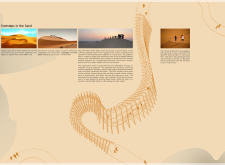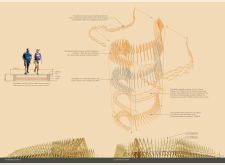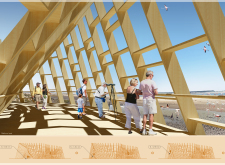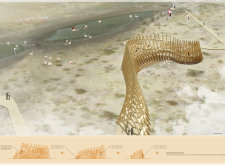5 key facts about this project
The primary function of the project is to serve as an observation point for both recreation and education, allowing visitors to appreciate the flora and fauna of the wetland while promoting environmental awareness. The structure is designed to facilitate movement through the landscape, with pathways that mimic natural forms, leading users effortlessly to the observation tower.
The observation tower itself is a central element of the project, ascending gracefully to provide panoramic views of the reserve. It is constructed using a combination of teak wood and steel plates, which lend both strength and elegance to the design. The choice of materials reflects a commitment to sustainability and weather resistance, ensuring longevity in a harsh environment.
The unique design approach includes a spiral form that enhances the journey upwards, creating a rhythmic ascent that invites exploration. The use of modular components allows for efficient assembly and maintenance, while also demonstrating an innovative approach to structural engineering that combines natural materials with modern technology. Additionally, the incorporation of horizontal louvers around the observation area serves to modulate sunlight, creating comfortable microclimates within the structure while providing shade for visitors.
The pathways leading to the tower are designed with permeability in mind, allowing for easy navigation over sensitive terrain. They encourage a connection with the surrounding environment, guiding users to experience the changing dynamics of the landscape, from sandy surfaces to wetland views.
To further understand the nuanced details of this architectural project, readers are encouraged to explore additional materials such as architectural plans, architectural sections, architectural designs, and architectural ideas that provide deeper insight into the conceptualization and execution of "Footsteps in the Sand."


























